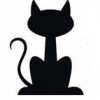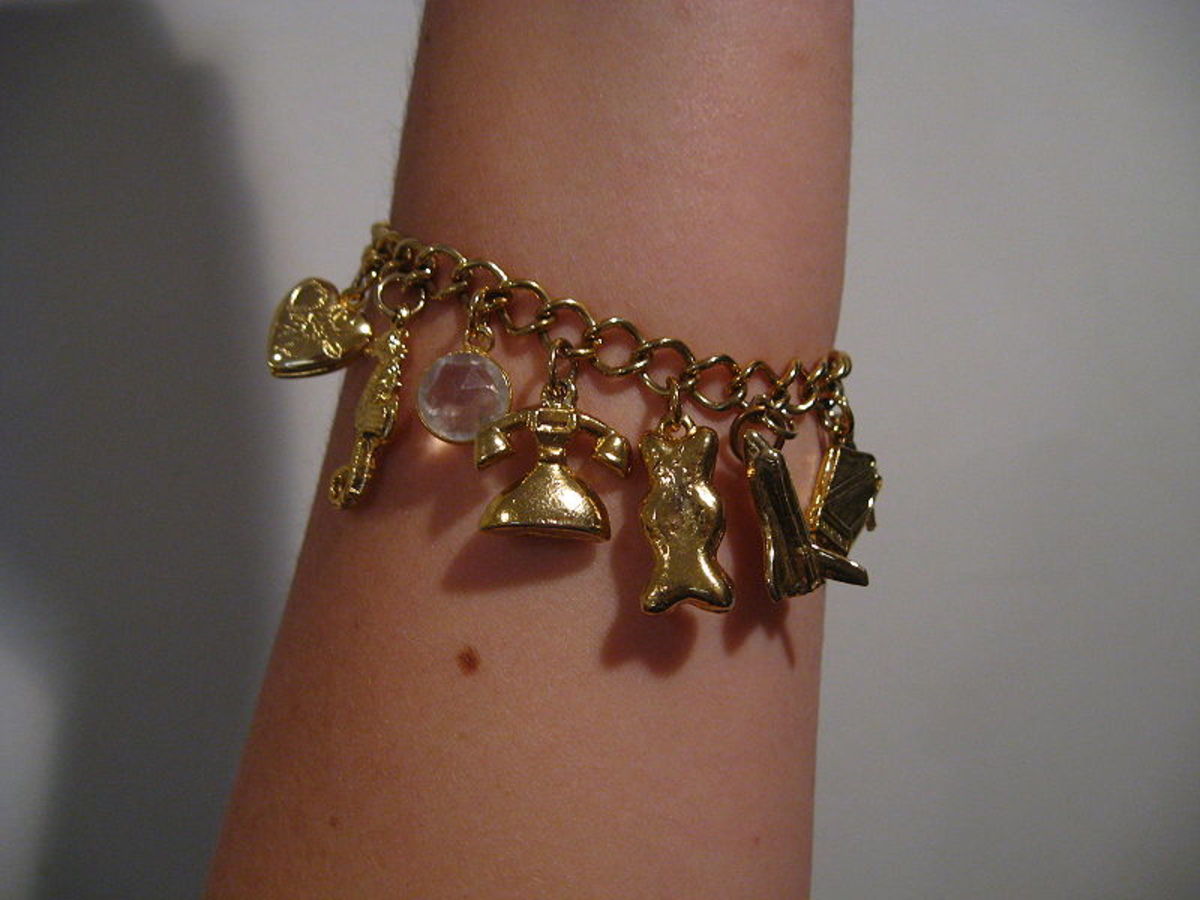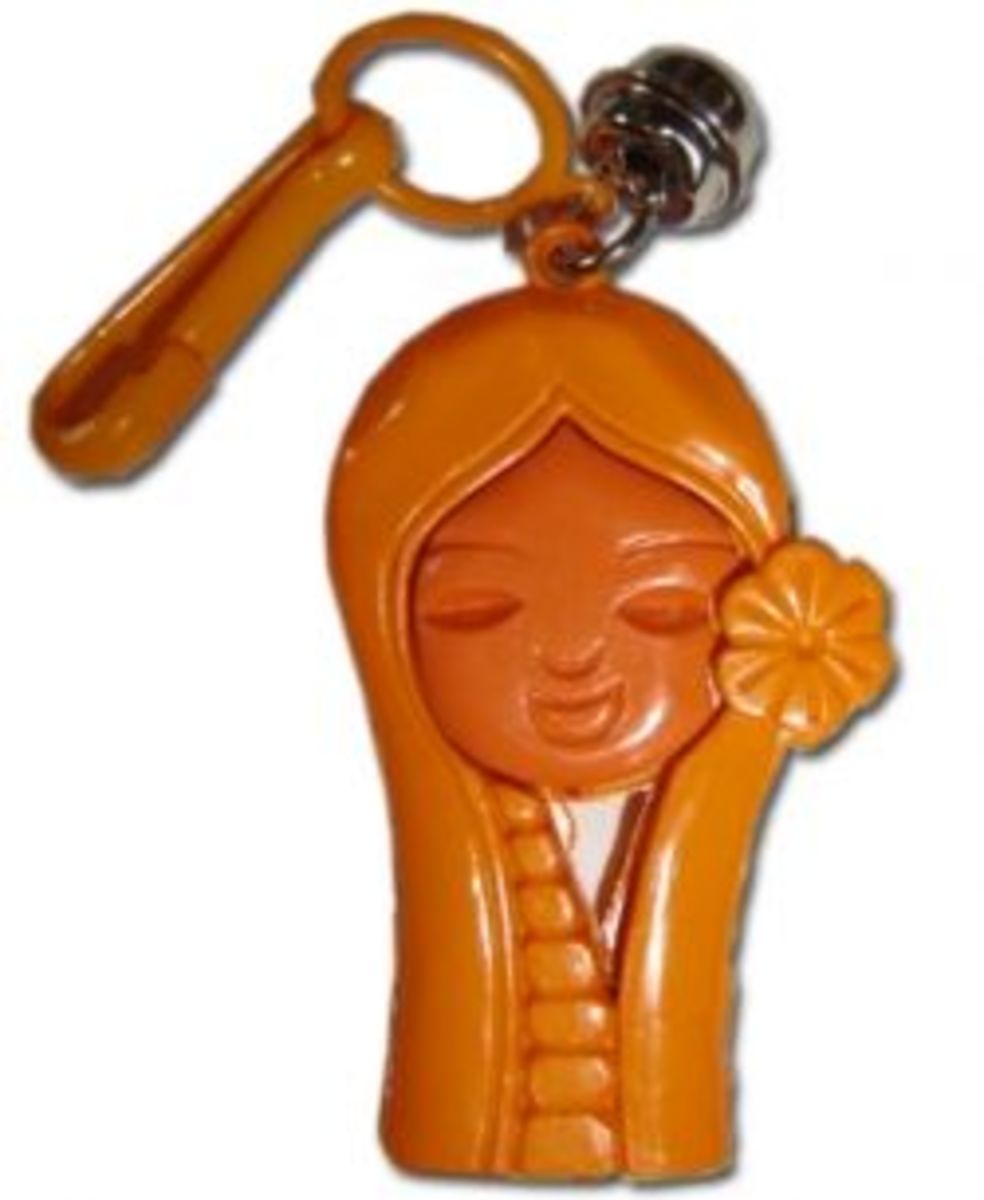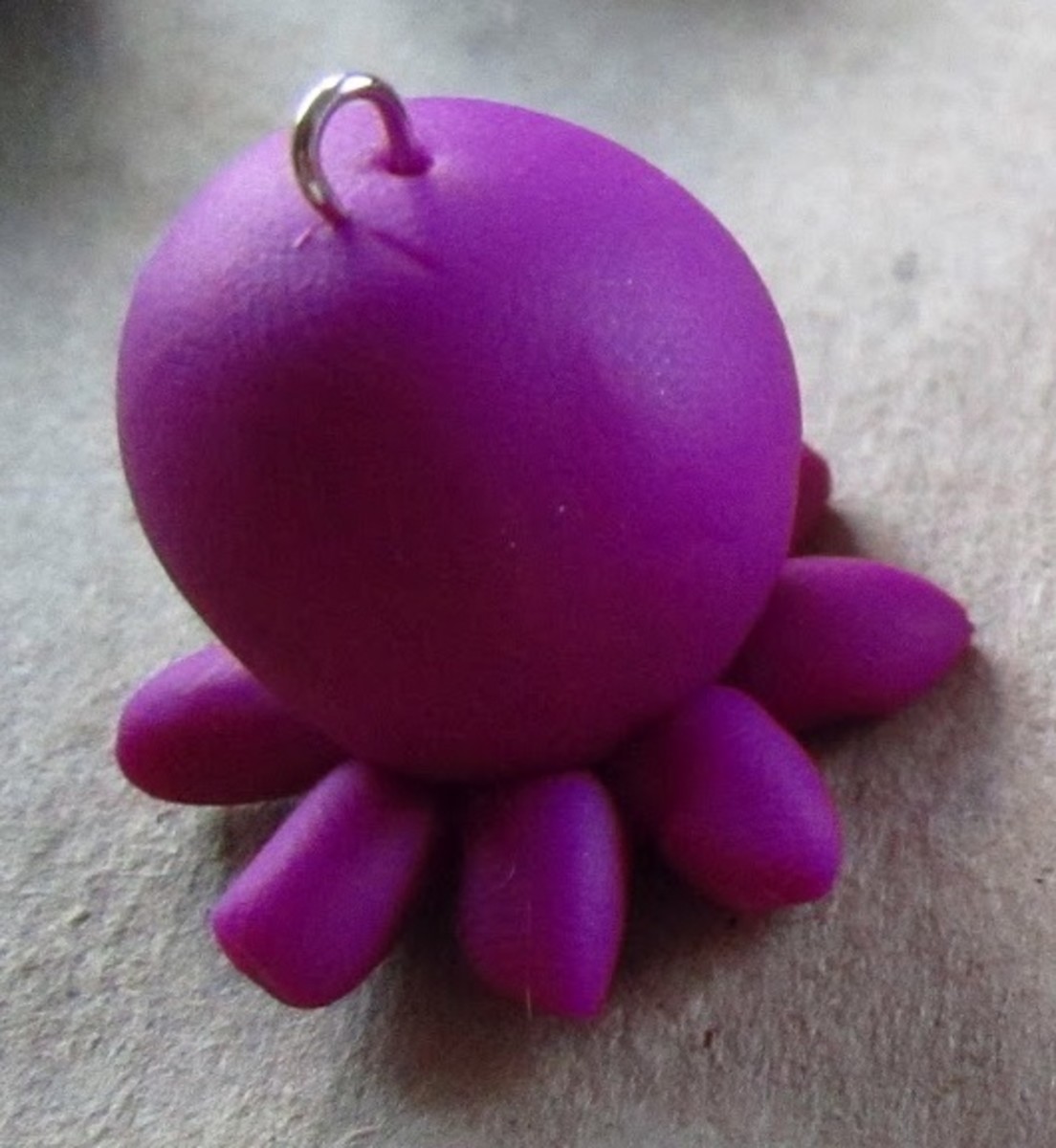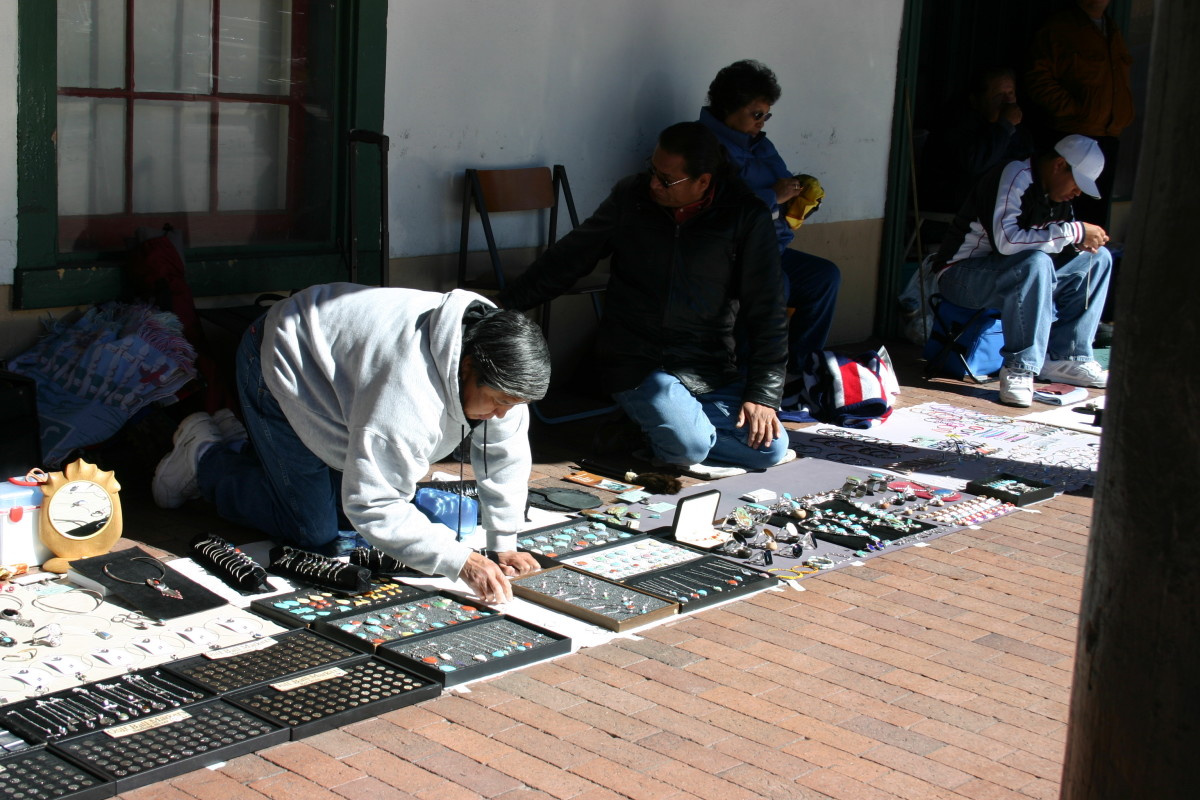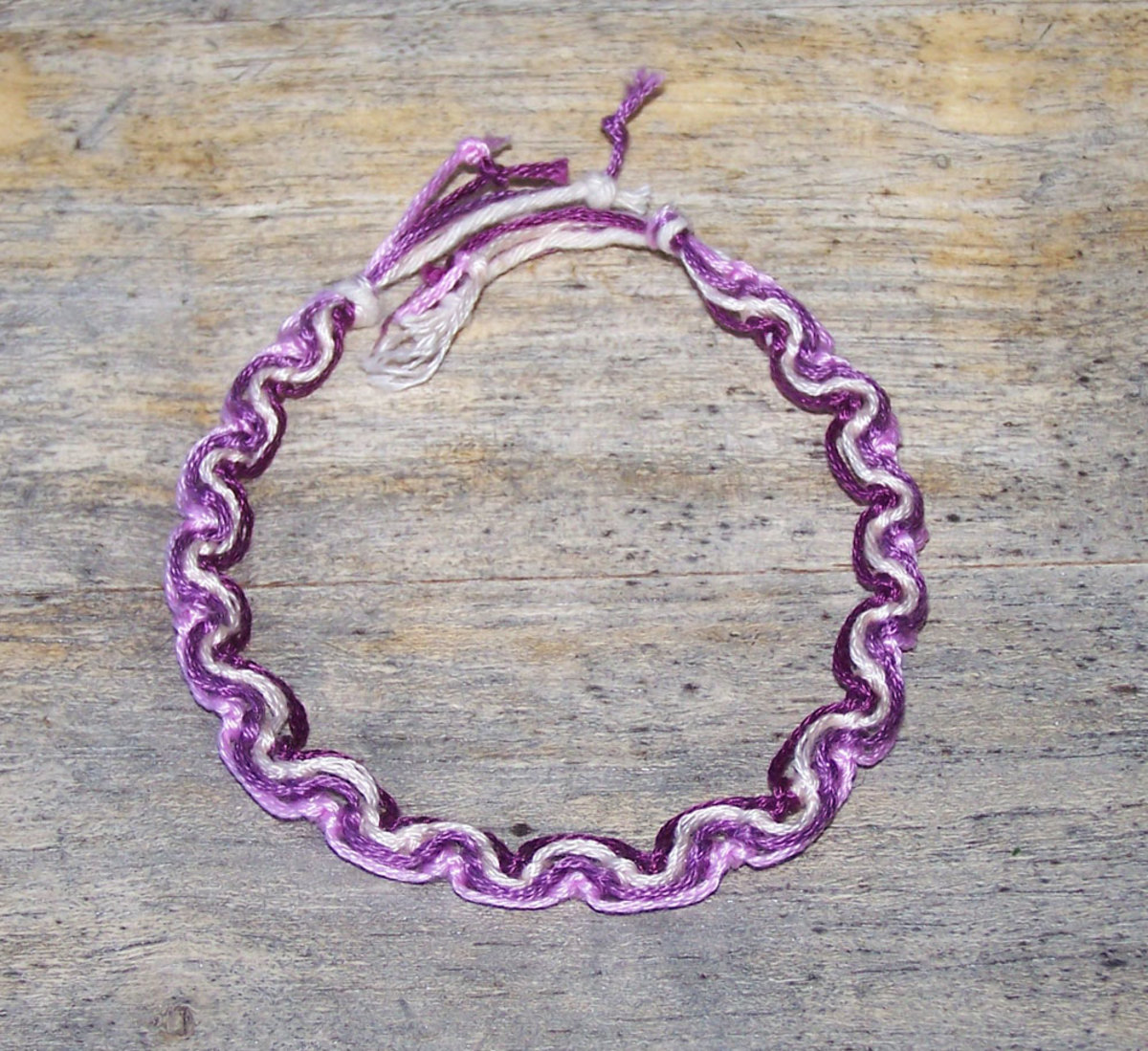A Brief History Of Charms And Charm Bracelets
Neolithic Jewellery
Going back to 4500BC, Neolithic man would carve and shape bone, shell or wood to fashion some form of jewellery, possible in the shape of an animal or bird, even using clay, then attach to a piece of leather to wear around his or her neck. This initial form of amulet would possibly be to ward off evil spirits or to bring good fortune. Archeological sites have been excavated and discoveries of jewellery back to this period have been found. One can imagine that these people would actually use such items as ‘charm’ bracelets
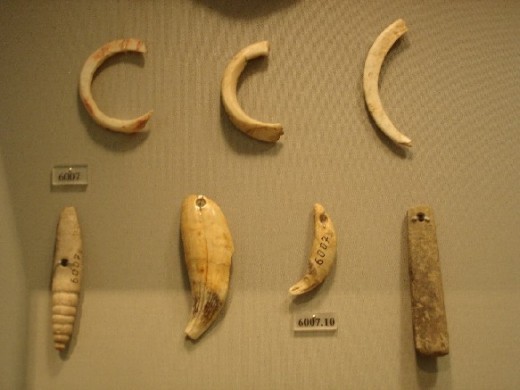
However, previous to Neolithic man we can go back to the Middle Stone Age. Nassarius kraussianus shells that have been perforated to be strung into beads. They are thought to be some of the oldest known man-made jewellery. They were discovered in a cave in Blombos, South Africa.
In the Bronze Age, some 2500-700BCBC the wearing of charms were associated with love, spirituality, magic, mystique, and protection. These amulets would be used as a talisman, however, as time progressed such items of jewellery were worn as adornments and given as gifts to one’s closest.
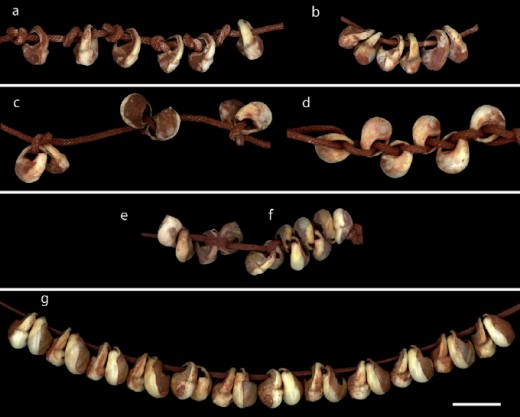
Different cultures were coming off age, Assyrians, Persians, Babylonians, and others were starting to fashion natural materials, agates, flints, woods, bone, shells, and some metals. Semi-precious materials nearer to the later period such as lapis lazuli, rock crystal, agate pebbles are used by Babylonians and were the first known people to actually wear various charms on a bracelet, thus an association with various attachments and beliefs could be laid to each charm, and this is seen just as today the reason why each charm has a special meaning.
Ancient Egypt
Ancient Egypt being seen as one of the most ‘civilised’ of the ancients loved their jewellery and used metals, especially gold to create amulets and charms which had a dedicated meaning. These were often set with precious stones and of course were used particularly to adorn Pharaohs. The average Egyptian would only live for about 30-35 years, so preparing for a prosperous afterlife was very important to them. Jewellery therefore, played a massive part to Egyptians with charms in particular used to ward off evil spirits and enhance fertility. These would indicate the wealth of the person, and their status. They were used as a signal to the Gods to ensure proper status in their afterlife.
The scarab amulet (a bright green beetle) was one very important charm which in particular signified regeneration. The scarab would be placed close to the wearer to ensure their ability to pass successfully into the next world.
The Ankh
The other important charm was the Ankh ( a cross look with a looped top). Still very much in use, today, would be seen as the key of life. The Eye of Horus too was another important symbol.
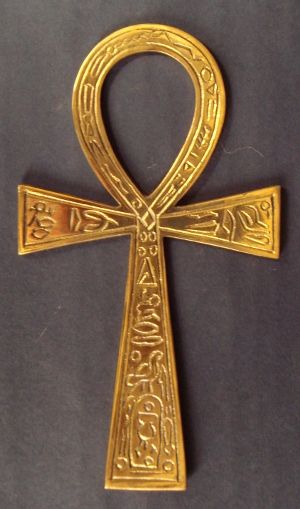
The Romans
The next major civilization which attached much importance and symbolism it jewellery was the Romans. They would copy Egyptian styles and liked to delicate filagree or lace like fashioned in gold and silver. During this period the Christians who were not particularly favoured by the Romans would wear a symbol in the shape of a fish, called the ichthys, this would discreetly identify them as a follower of Christ. The fish symbolized the feeding of the five thousand by Jesus, on the shores of the Jordan River.
During the Middle Ages, Royalty and Knights also used charms and amulets as protection, especially against witchcraft and wizardry. They believed that their enemies would use this to attack them, and the population, in general, were concerned with what witchcraft could deliver upon them. Gemstones in amulets were worn by women, but also by knights who wore amulets set with gems and charms which would represent their family origin, political allegiance or their social standing, or even their profession. They would hope that these charms along with prayer and incantation would gain them protection from God in their battles.
Gemstones in amulets were worn by women, and also by knights who wore amulets set with gems and charms which would represent their family origin, political allegiance or their social standing, or even their profession. They would hope that these charms along with prayer and incantation would gain them protection from God in their battles.
As the Middle Ages ended there began the European Renaissance, an age of learning and the wearing of charms to ward off evil spirits, especially among the wealthy and influential had faded. The books and science slowly replaced the old superstitions. However, nobility still wanted visual indications of their wealth, stays and power, so the importance of gemstones and birthstones grew in popularity. However, the masses still wore cheap charms of wood and stone, clay too as was the great ‘uneducated’ so that the old ideas of fear and superstition did not disappear.
The New Age Using Machine Crafted Technology
Up until the end of the Victorian era and with the introduction of machine technology, all metals, including gold and silver mass production was the great change to that came to the age. The growing middle classes were able to purchase jewellery in all its forms and charms were no exception, and items of beauty were well within the reach of these consumers.
Queen Victoria was a champion of beads, rings and charms, and her tastes were copied by her subjects. She would make the wearing of charms an association of her likes. Maybe a tiny heart or a forget me knot shaped charm set with turquoise and pearls, this being a show of her love for Prince Albert, and the fashion for the wearing of a charm bracelet was beginning and would not end.
Small lockets containing plaits of hair, glass shaped beads in various semi-precious stones. The other popular style were seal charms. These would be gold and non-gold charms cast to form carved shapes and these would have a stone at the base, onyx, sardonyx, bloodstone or glass, and many would then be carved with a family crest or maybe initials.
These charms were worn on bracelets (and still are) or attached to watch chains. They could then be used in impress melted sealing wax to a document or a letter.
After the death of Prince Albert, the fashion moved more towards memorial jewellery and charms were not exempt from the ‘fashion'. The adding of hair to a glazed locket from the deceased, possibly a husband or a lost child was platted into frond shapes and sometimes tied with a small piece of ribbon. Sometimes a small painted portrait would be worn and shapes carved from black jet.
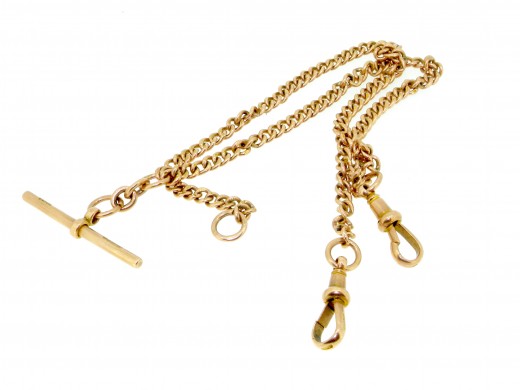
The Gold Chain Bracelet
By the late 19th century Tiffany introduced a chain link bracelet with just a single heart shape dangling from it and was the forerunner of the designer trend. In the 20s and 30s, the Art Deco movement of stylized shapes and designs affected the mood for wearing of charms, and platinum set with diamonds. Angular and geometric shapes were popular as were the introduction of initials were also decorated with precious stones.
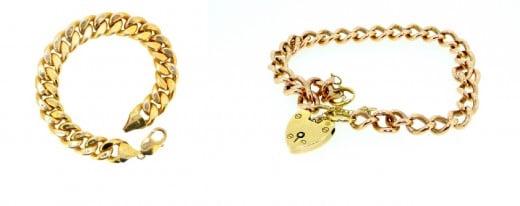
The second world war repeated the desire of servicemen going overseas to wear trinkets and good luck mementos as their fathers had in the previous Great War. Hearts with photographs were taken by them, but also worn by their sweethearts and wives at home, and the significance of the charm was heightened in this period, with keys (to the heart) charms that spun on a pivot, then spelt ‘I love You’, a small disc with the other half name, with maybe a message.
Silver charms were also becoming very popular as these were obviously far cheaper than gold, and collecting in all shapes and styles was something many women did throughout the 50s to present day. Another fashion was the purchase of a charm representing a town or country. Many towns throughout the world would have cast their own ‘charm’, usually, shield shape and coloured enamel with the town's crest and name upon and people would commemorate their visit by adding this to their bracelet. In the States, small acrylic charms were made and put into cereal packets or
In the States, small acrylic charms were made and put into cereal packets or gumbull machines which children collected starting them off in time to collect the precious alternative. Shapes such as Betty Boop, Mickey Mouse, and Popeye to name a few were then being remade in silver.
So the 1960s saw a boom for the wearing of charm bracelets and collection of charms. It was a must have fashion item, and young women would receive a bracelet for their 16th and 18th birthdays, adding keys, initials, and then other achievements would be added to the bracelet such as engagements, travel, graduation, weddings, child birth, horoscopes and birthstones. Certainly the wearing of one’s birth sign was another addition that would be immensely popular. In the USA.
It was customary for a 13-year-old girl to be given a starter charm bracelet, and as above the bracelet would mark the path of their lives and be passed from mother to daughter. The 1980s did see a demise in the fashion in favour of bolder fashion jewellery and the charm bracelet was not what is was.
However, the 1990s saw a reinvention of the fashion and from Denmark came the Troll bead fashion. These were glass beads with silver adornment and small discs or charms that were threaded onto a snake style bracelet.I
The Rise of Pandora
In the 2000s Pandora started by Danish couple Per and Winnie Eneyoldsen become a trend through to the present day selling all over the world. An extension of the Troll bead idea they have taken to new heights with the opening of dedicated stores too.
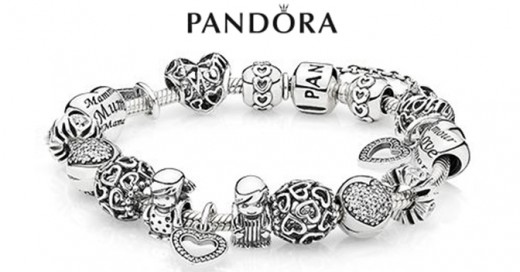
However, whilst the traditional charm bracelet has not returned in full, there is a revival in the old types of bracelets and the collection of old and vintage charms are making a comeback. Charms that celebrate Christmas, Halloween and Easter, ones that open, such as a church with a couple inside, to more unusual charms such as kitchen sinks, bath tubs, caskets that open, and almost any shape or animal one can think of.
We have many online, but hundreds in our store. If there are any charms and bracelets shape you require in gold or silver, just email us contact@vintagetom.co.uk www.vintagetom.co.uk
